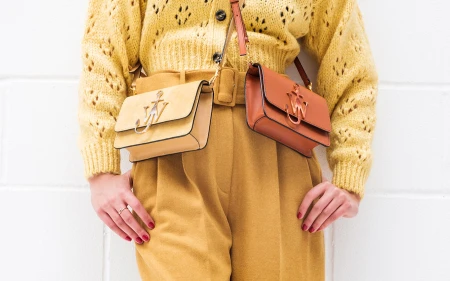
Sustainable Fashion: The Future of Clothing
As awareness grows about the impact of fashion on the environment, there is a growing movement towards sustainable fashion. Sustainable fashion is about creating clothing in a way that is environmentally friendly, socially responsible, and economically viable. This means considering the entire lifecycle of a garment, from the materials used to create it, to the conditions in which it is made, to the way it is disposed of.
The Problem with Fast Fashion
Fast fashion is a business model that relies on producing large quantities of clothing quickly and inexpensively. This model encourages consumers to buy more clothes, more frequently, leading to a culture of disposable fashion. The problem with fast fashion is that it has a significant impact on the environment, as well as on the workers who produce the clothing.
Many of the materials used in fast fashion are non-biodegradable, meaning they will not break down when they are thrown away. These materials end up in landfills or in our oceans, where they can take hundreds of years to decompose. In addition, the production of fast fashion requires large amounts of water and energy, contributing to greenhouse gas emissions and climate change.
The workers who produce fast fashion are often paid very low wages and work in unsafe conditions. Many of these workers are women and children, who are vulnerable to exploitation and abuse. The fast fashion industry also relies on the use of chemicals and dyes, which can be harmful to both workers and the environment.
The Benefits of Sustainable Fashion
Sustainable fashion, on the other hand, is about creating clothing in a way that is environmentally friendly, socially responsible, and economically viable. This means using materials that are biodegradable or recycled, producing clothing in a way that uses less water and energy, and ensuring that workers are paid a fair wage and work in safe conditions.
There are many benefits to sustainable fashion. First and foremost, it is better for the environment. By using biodegradable or recycled materials, sustainable fashion reduces the amount of waste that ends up in landfills or in our oceans. By using less water and energy in the production process, sustainable fashion reduces greenhouse gas emissions and helps to combat climate change.
In addition, sustainable fashion is better for workers. By paying workers a fair wage and ensuring that they work in safe conditions, sustainable fashion helps to improve the lives of those who produce our clothing. It also helps to support local communities and economies, as many sustainable fashion brands use local materials and work with local artisans.
How to Support Sustainable Fashion
If you want to support sustainable fashion, there are many things you can do. First and foremost, you can be a conscious consumer. This means buying less and choosing higher quality clothing that will last longer. It also means choosing clothing made from sustainable materials, such as organic cotton, bamboo, or recycled materials.
You can also support sustainable fashion by choosing to buy from brands that are committed to sustainability. Many sustainable fashion brands are transparent about their production process and are certified by organizations such as the Global Organic Textile Standard (GOTS) or the Fair Trade Certified.
In addition, you can support sustainable fashion by buying second-hand clothing. By giving clothing a second life, you are reducing the amount of waste that ends up in landfills or in our oceans. You can also swap clothes with friends or participate in clothing swaps in your community.
The Benefits of Sustainable Fashion
As we become more aware of the impact of our actions on the planet, we are also realizing the benefits of sustainable fashion. Here are some of the benefits:
- Reduced environmental impact: Sustainable fashion uses environmentally friendly materials and production processes, which reduces the amount of waste and pollution in the environment.
- Better quality clothing: Sustainable fashion is often made with higher quality materials and manufacturing processes, which means that the clothes last longer and are less likely to end up in landfills.
- Supports local communities: Sustainable fashion often supports local communities by using locally sourced materials and labor.
- Improved working conditions: Sustainable fashion companies prioritize fair labor practices, which means that workers are paid fairly and work in safe conditions.
- Fosters creativity: Sustainable fashion encourages designers to think outside of the box and create new and innovative products.
The Challenges of Sustainable Fashion
While there are many benefits to sustainable fashion, there are also some challenges. Here are some of the challenges:
- Higher costs: Sustainable fashion often costs more than fast fashion because of the higher quality materials and manufacturing processes.
- Limited availability: Sustainable fashion is not yet as widely available as fast fashion, which can make it harder to find and purchase.
- Education and awareness: Many people are not yet aware of the importance of sustainable fashion and may not prioritize it when making purchasing decisions.
- Changing consumer behavior: To truly make a difference, sustainable fashion requires a change in consumer behavior. Consumers need to prioritize sustainable fashion over fast fashion and be willing to pay more for higher quality and environmentally friendly clothing.
How to Incorporate Sustainable Fashion into Your Wardrobe
Here are some tips for incorporating sustainable fashion into your wardrobe:
- Shop secondhand: Shopping secondhand is a great way to reduce the demand for new clothing and keep clothing out of landfills.
- Look for sustainable brands: Look for brands that prioritize sustainability and environmentally friendly practices.
- Invest in high-quality clothing: Investing in high-quality clothing that lasts longer can help reduce the amount of clothing that ends up in landfills.
- Reduce and reuse: Consider reducing the amount of clothing you buy and reusing items in new and creative ways.
- Take care of your clothes: Properly caring for your clothes can help them last longer, reducing the need to replace them frequently.
The Future of Sustainable Fashion
The future of sustainable fashion is promising. As more consumers become aware of the impact of their actions on the planet, the demand for sustainable fashion is likely to grow. This increased demand will encourage more companies to prioritize sustainability and environmentally friendly practices, making sustainable fashion more widely available and affordable. Additionally, technological advancements in materials and manufacturing processes will continue to make sustainable fashion more innovative and creative.
By prioritizing sustainable fashion and making conscious purchasing decisions, we can all do our part to reduce the environmental impact of the fashion industry and promote a more sustainable future.


















